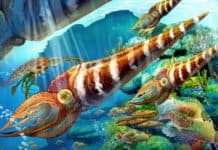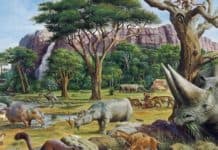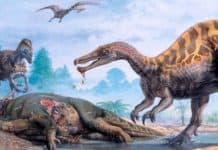Today, we are going to spend some time talking about dinosaur bones. We are going to find out when the first complete dinosaur skeleton was found, some of the interesting facts paleontologists have discovered by studying them and a whole host of other interesting facts.
When Were The First Dinosaur Bones Discovered?
The truth of the matter is that mankind has been finding these bones for thousands of years. In many parts of Asia, these bones were discovered and were thought to be the bones of dragons. In and around Greece, people found these bones and made up fantastic stories about them. Stories that would later become a part of their mythology. Some people even placed some of these bones in temples and worshiped them.
Then in 1676, naturalist Reverend Plot discovered a bone in a field. He thought this huge femur bone belonged to a giant, but now scientists believe that it must have belonged to a dinosaur. However, while this was the first bone to be accurately described, it wasn’t scientifically studied. That wouldn’t happen until a fossil hunter named William Buckland came on the scene.
In 1819 William Buckland found some Megalosaurus bones in a field. By 1824, he had accurately described them scientifically. This dinosaur skeleton would become the first therapod dinosaur discovered. In 1868, a complete Hadrosaurus was discovered in New Jersey. This complete skeleton was the first one ever assembled and displayed. Over the next 190 years, all kinds of dino bones would be found. In fact, every few weeks or months it seems like a new one is discovered.
What Can Be Learned From Dinosaur Skeletons?
Recently, scientists have found the presence of seventy-five million year old red blood cells in dinosaur bones. It should give scientists a better idea of how dinosaurs looked or behaved. However, while they found proteins in this blood, they didn’t find DNA. So if any of you are thinking that they are going to replicate dinosaurs like they did in Jurassic World—then I’m sorry to burst your bubble. It isn’t going to happen through this discovery.
Scientists have already learned a whole lot about dinosaurs through the study of their bones. They have learned how big they were, how much they weighed and even how some of them moved. Scientists can even tell what the dinosaur ate by studying its bones. For instance, just by looking at a dinosaur’s skull, paleontologists can learn whether the dinosaur ate plants or ate meat. They can also discover whether the dinosaur was likely to be smart or dumb. As you can see, the study of these skeletons is important to the advancement of dinosaur studies. It may even give us insight into the evolution of other animals—including ourselves.

























